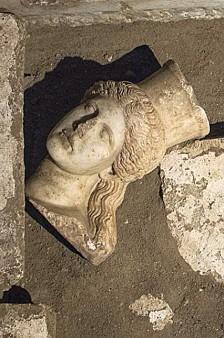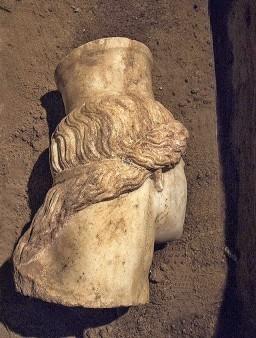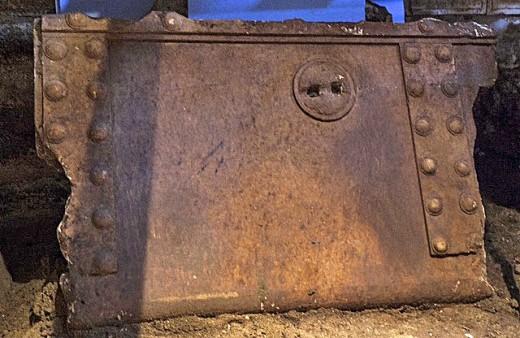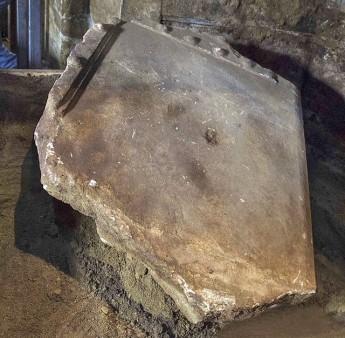Source - http://www.archaeology.wiki/blog/2014/10/22/finding-sphinxs-head-makes-amphipolis-riddle-complex/
Archaeologists on Kasta hill experience a lifetime discovery but face a progressively harder to solve mystery
The marble head of the Eastern Sphinx is the new impressive find in Amphipolis, the result of the ongoing excavating activity on the whole surface of the third chamber’s interior, and at a depth of up to 5.20m from the top of the tholos.

The head was found intact except of some fractures at the nose area.

The head has waving hair locks with traces of red pigment. The curls fall onto the Sphinx’s left shoulder.
The head was revealed 0.15m below the surface of the marble threshold, i.e. at a relatively long distance from the entrance of the burial monument where the Sphinxes’ torsos stand. Thus archaeologists face yet another mystery in this hard to solve enigma of Amphipolis, as the assumption of a “looting” activity in antiquity is being strengthened.
Nevertheless, the head was located intact with only minor fractures at the nose. It has a height of 0.60m, looks to the entrance and wears a polos. At the lower part of the throat the section where the head was inlaid to the torso is preserved intact. The head has waving hair locks, with traces of red pigment. The hair falls on the Sphinx’s left shoulder and is held by a thin band. The sculpture is of exquisite art. Archaeologists also found fragments of the Sphinxes’ wings.
On Monday a trial trench of 2x2m was opened at the entrance of the fourth chamber, at a 0.45m depth. In front of the entrance in this room two parts of the western door leaf were found.

Part of the western door leaf.

Part of the western door leaf.
The northern part of the marble threshold was also revealed. The whole threshold is 2.15m long, 1.6m wide and 0.25m thick. It has curved depressions for the inlay of metallic rails, tracks or traces of ruts, which means that the door to the tomb opened and closed.

The traces of ruts on the marble threshold.
One could thus assume that the tomb was used for successive burials –and not just once-, while after the last dead was buried the tomb was sealed, or covered with debris to protect it from looters.
As the trial trench revealed, there was a floor made of porous stones covered with white plaster. On both sides of the threshold the porous stones of the floor were found in situ. On the eastern side of the trench the floor seems to have subsided, whereas further to the west the floor is destroyed and the stones have fallen in the trench.